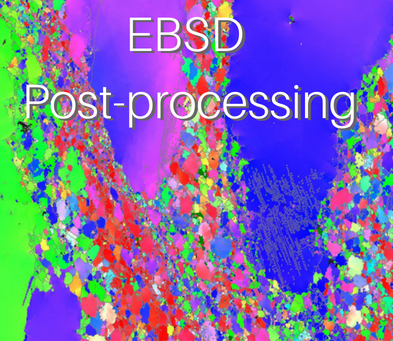产品
FIB-SEM
Nanomanipulators
OmniProbeOmniProbe Cryo软件
AZtec3DAZtecFeatureAZtec LayerProbeTEM
Hardware
EDSUltim MaxXploreImaging
软件
AZtecTEM

Collecting good quality data is only the beginning of any complete EBSD analysis. The HKL CHANNEL5 system provides all the necessary tools to process comprehensively the data in any format desired. Each software module performs a specific task, but they are all interconnected via the data management module, Project Manager.
Tango - Orientation map display and manipulation software
Mambo - Pole figure and inverse pole figure software
Salsa - ODF and MODF calculation and display software
Twist - Phase creation software
Tango is a sophisticated software module designed for the sole purpose of manipulating orientation maps. The flexibility of Tango allows you to display each map in many ways and to extract whatever information is important to you. This includes grain sizes, texture data, boundary characteristics, phase distributions and recrystallised fractions.
All of the conventional methods for displaying EBSD mapping data are complemented by an extendable library of map components: many are supplied as standard, but if you wish to define specialised components for your data, Tango provides the facility to create them.
Key Features:
The physical properties of many samples are dependent on the common alignment of particular crystallographic directions: one of the easiest ways to view this is to use pole figures or inverse pole figures.
Mambo is an advanced pole figure program that provides all the features necessary to examine preferred crystallographic orientations in samples analysed using EBSD. However, not only can Mambo analyse orientation data, but it can also be used to study misorientation data. The rotation axes associated with every boundary in the sample can be plotted in either sample or crystal coordinates, thus helping to identify the nature of any special boundaries.
All displays in Mambo can be contoured using advanced contouring algorithms, providing density and contoured displays as required. Mambo is the perfect tool for viewing EBSD data in pole and inverse pole figures.
Key features
Sometimes a pole figure is not enough. The mathematical calculation of an orientation distribution function (ODF) provides, however, a complete description of the texture in your sample.
Salsa can calculate ODFs using several standard methods, and then provides all of the display options necessary for easy interpretation of the results.
Whether you require 3-D plots of the complete Euler space, serial sections or even single density profiles, Salsa provides you with the necessary tools. And, as misorientations and orientations are mathematically equivalent, Salsa also calculates misorientation distribution functions (MODFs).
Key Features
ODF calculation algorithms
Display modes
Viewing options:
Creation and display of any ideal orientation, e.g. Goss or 100 fibre
Advanced subset selection of specific orientations
Data and graphic export facility in many formats
Before AZtec can index an EBSP, it needs to know which lattice planes in the crystal structure produce the most intense diffraction bands. Although such "reflector files" for many of the most commonly analysed phases are supplied with AZtec, you may sometimes want to collect EBSD data from a "new" phase.
Twist is an easy-to-use software module that allows you to generate reflector files for new phases, regardless of their symmetry, using atomic position data and an advanced kinematical diffraction theory.
Key Specifications:
Project Manager is the central hub of the CHANNEL5 data processing software, controlling the data management and communicating with all the other software modules (Tango, Mambo and Salsa).
However, it is much more than just a data management program, as it provides many other tools for the analysis and display of EBSD data. These range from a 3-D crystal viewer to management of CHANNEL5's unique subset selection facility, all allowing greater flexibility and control during your data processing.
Project Manager is supplied as standard with all CHANNEL5 systems, and includes the following key features:
 公安机关备案号31010402003473
公安机关备案号31010402003473